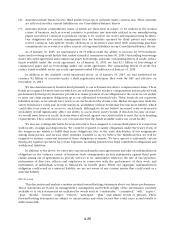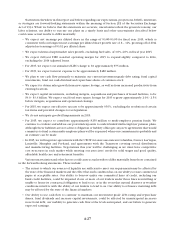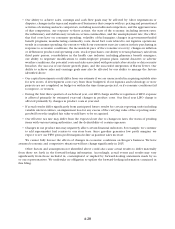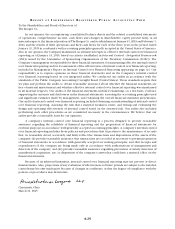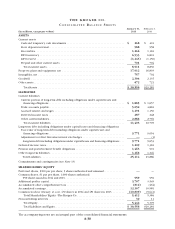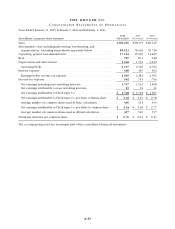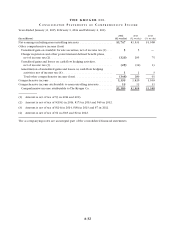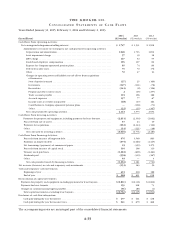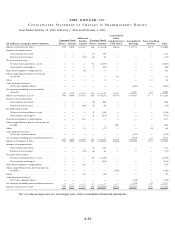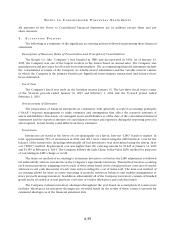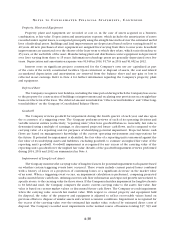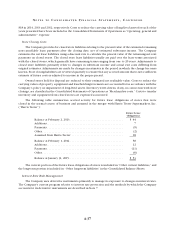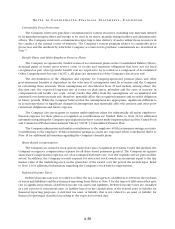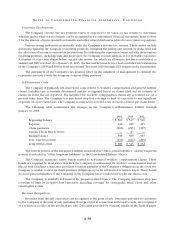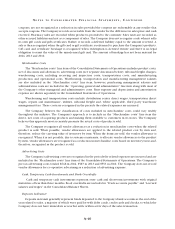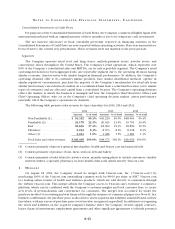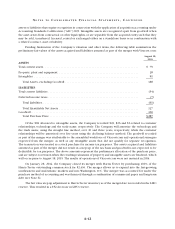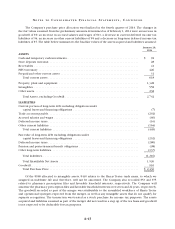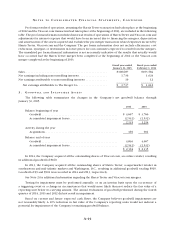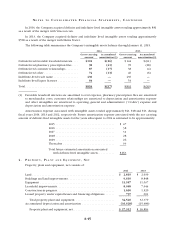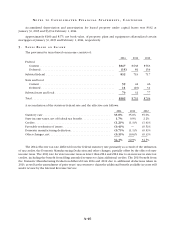Kroger 2014 Annual Report Download - page 101
Download and view the complete annual report
Please find page 101 of the 2014 Kroger annual report below. You can navigate through the pages in the report by either clicking on the pages listed below, or by using the keyword search tool below to find specific information within the annual report.A-36
NO T E S T O C O N S O L I D A T E D F I N A N C I A L S T A T E M E N T S , CO N T I N U E D
Property, Plant and Equipment
Property, plant and equipment are recorded at cost or, in the case of assets acquired in a business
combination, at fair value. Depreciation and amortization expense, which includes the amortization of assets
recorded under capital leases, is computed principally using the straight-line method over the estimated useful
lives of individual assets. Buildings and land improvements are depreciated based on lives varying from 10 to
40 years. All new purchases of store equipment are assigned lives varying from three to nine years. Leasehold
improvements are amortized over the shorter of the lease term to which they relate, which varies from four to
25 years, or the useful life of the asset. Manufacturing plant and distribution center equipment is depreciated
over lives varying from three to 15 years. Information technology assets are generally depreciated over five
years. Depreciation and amortization expense was $1,948 in 2014, $1,703 in 2013 and $1,652 in 2012.
Interest costs on significant projects constructed for the Company’s own use are capitalized as part
of the costs of the newly constructed facilities. Upon retirement or disposal of assets, the cost and related
accumulated depreciation and amortization are removed from the balance sheet and any gain or loss is
reflected in net earnings. Refer to Note 4 for further information regarding the Company’s property, plant
and equipment.
Deferred Rent
The Company recognizes rent holidays, including the time period during which the Company has access
to the property for construction of buildings or improvements and escalating rent provisions on a straight-line
basis over the term of the lease. The deferred amount is included in “Other current liabilities” and “Other long-
term liabilities” on the Company’s Consolidated Balance Sheets.
Goodwill
The Company reviews goodwill for impairment during the fourth quarter of each year, and also upon
the occurrence of a triggering event. The Company performs reviews of each of its operating divisions and
variable interest entities (collectively, “reporting units”) that have goodwill balances. Generally, fair value is
determined using a multiple of earnings, or discounted projected future cash flows, and is compared to the
carrying value of a reporting unit for purposes of identifying potential impairment. Projected future cash
flows are based on management’s knowledge of the current operating environment and expectations for
the future. If potential for impairment is identified, the fair value of a reporting unit is measured against the
fair value of its underlying assets and liabilities, excluding goodwill, to estimate an implied fair value of the
reporting unit’s goodwill. Goodwill impairment is recognized for any excess of the carrying value of the
reporting unit’s goodwill over the implied fair value. Results of the goodwill impairment reviews performed
during 2014, 2013 and 2012 are summarized in Note 3.
Impairment of Long-Lived Assets
The Company monitors the carrying value of long-lived assets for potential impairment each quarter based
on whether certain triggering events have occurred. These events include current period losses combined
with a history of losses or a projection of continuing losses or a significant decrease in the market value
of an asset. When a triggering event occurs, an impairment calculation is performed, comparing projected
undiscounted future cash flows, utilizing current cash flow information and expected growth rates related to
specific stores, to the carrying value for those stores. If the Company identifies impairment for long-lived assets
to be held and used, the Company compares the assets’ current carrying value to the assets’ fair value. Fair
value is based on current market values or discounted future cash flows. The Company records impairment
when the carrying value exceeds fair market value. With respect to owned property and equipment held
for disposal, the value of the property and equipment is adjusted to reflect recoverable values based on
previous efforts to dispose of similar assets and current economic conditions. Impairment is recognized for
the excess of the carrying value over the estimated fair market value, reduced by estimated direct costs of
disposal. The Company recorded asset impairments in the normal course of business totaling $37, $39 and


